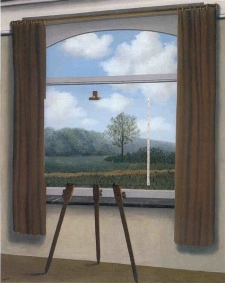
The brutality of the online commenter can sometimes be astonishing. The violence of the language is often out of all proportion to its surroundings. Certainly not every commenter resorts to personal attacks, but like spam, it’s something we seem to expect— and for some reason tolerate. What is it about the environment of the Network that allows this kind of behavior to flourish? Initially it was thought to be a function of anonymous comments, but more and more, we see attacks launched from identities based in social networks.
What are we, when we’re in the Network? Marshall McLuhan saw it by looking at the primitives of the new ‘electronic information conditions.’ Well before the internet and social media, he saw this new medium was fundamentally different and would change us utterly. When information moves at electronic speed– and it is information that serves as a trigger for all transactions, our relationship to the space surrounding us becomes transformed and devalued.
“The electronic age…angelizes man, disembodies him. Turns him into software.” — Marshall McLuhan
The annihilation of distance is the state of affairs where everything is ready-to-hand— technology creates a powerful extension of human reach. We can be present at a meeting anywhere around the globe without leaving our chair. We can buy/sell any kind of goods or services, research any topic and access any form of entertainment—as long as we have an access point to the Network. The information economy transforms the worker into pure information (inputs/outputs). The person becomes disembodied, omnipresent, but not omnipotent.
In McLuhan’s book on the Global Village, he talked about the satisfactions that would result from these radical transformations:
Robotism, or right-hemisphere thinking, is a capacity to be a conscious presence in many places at once. It is a right-hemisphere mode— the dominant brain mode of the extended mechanical abilities of our bodies, keyed to one time and one place. Communications media of the future will accentuate the extensions of our nervous systems, which can be disembodied and made totally collective. New population patterns will fuel the shift from smokestack industries to a marketing-information economy…
McLuhan also discussed the dissatisfactions of this new environment:
Robotism is also decentralizing. In an electrically configured society all the critical information necessary to manufacture and distribute, from automobiles to computers, would be available to everyone at the same time. Espionage becomes an art form. Culture becomes organized like an electric circuit: each point in the net is as central as the next.
Electronic man loses touch with the concept of the ruling center as well as the restraints of social rules based on interconnection. Hierarchies constantly devolve and reform.
When we are born into the digital Network, we are formless— our point of origin is obscured. Connections to family, work, organizations, and local community are absent, we enter the Network untethered. Because our identity is unknown, it presents no attack surfaces, no surfaces of any kind. Should we choose to, we can launch attacks into any opening in the Network without fear of reprisal. Disconnected from our earthly connections, we are drawn toward and begin to flock with our mirror images.
When we lose touch with social rules based on interconnection, there are no checks on our behavior— we tend to move toward the extremes. Cass Sunstein in his new book Going to Extremes makes the case that “closed groups of like-minded people, if left to their own devices, will move towards the extreme.” He notes that when people with similar views debate an issue, they end up with more extreme positions than any of them previously held.
As we take root in the Network, some would call it establishing a personal brand, we expose— put forward representations of ourselves. As we produce outputs, we also seek inputs. It’s here where we begin to expose attack surfaces. As with any relationship, it’s the moment that we start to be vulnerable that the possibility of something interesting begins. In most small personal networks the connections occur directly between known entities. When one accepts inputs from the Network in general— there are no limits on who might respond and what they might say. While this relationship opens the door to an unlimited kind of discovery, it also opens the door to an unlimited kind of abuse. Openness of this kind depends on an assumption of civility.
There’s an asymmetry to the configuration of Network inputs and outputs. While the outputs are visible and have a known location, those producing inputs have no location requirement. A comment can literally come from nowhere. And the invulnerable commenter, like the spammer, rarely contributes anything of value. The premise of civility is founded on the idea that a person has something at stake. A person who comments under a personal brand puts that brand value at stake with each comment and so an economic calculation is made concurrently with each comment.
We started with the concept of a two-way web, but began with a publication medium (read only). Writing surfaces have been tacked on to reading material to simulate a two-way interface. I wonder what a symmetrical interface event with two-way visibility and read/write capability would look like? (Twitter? FriendFeed?) It’s the visibility into social connections that begin to exert a civilizing influence. Social connections are perhaps the most valuable thing we have: family, work, marriage, children, friends. Returned to a social context, the disproportionate nature of the violent comment is exposed and its true price is finally visible.
One Comment
